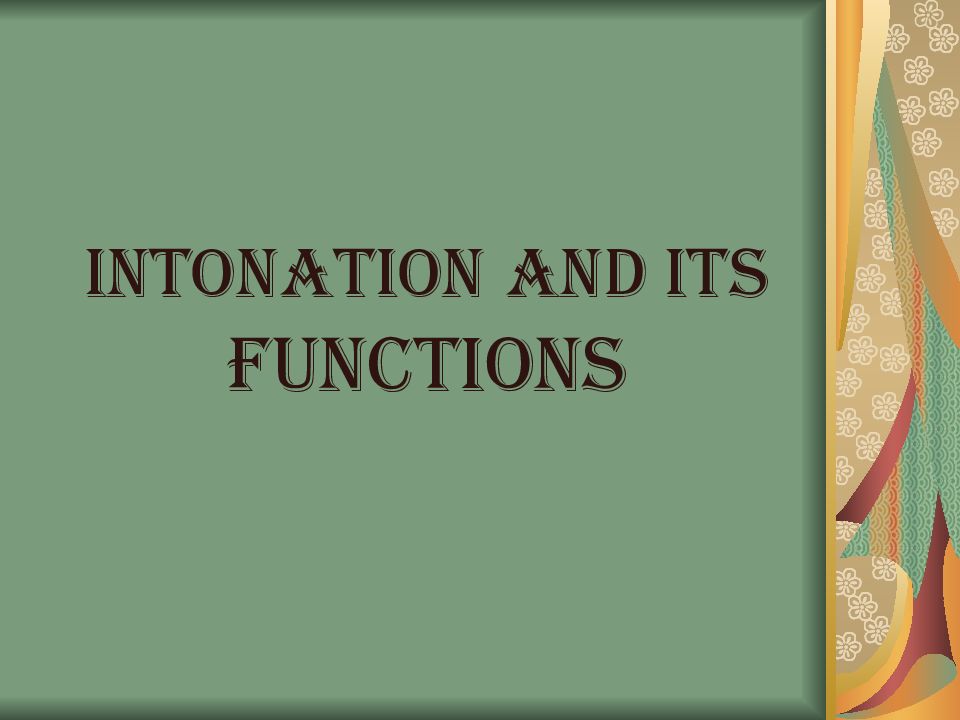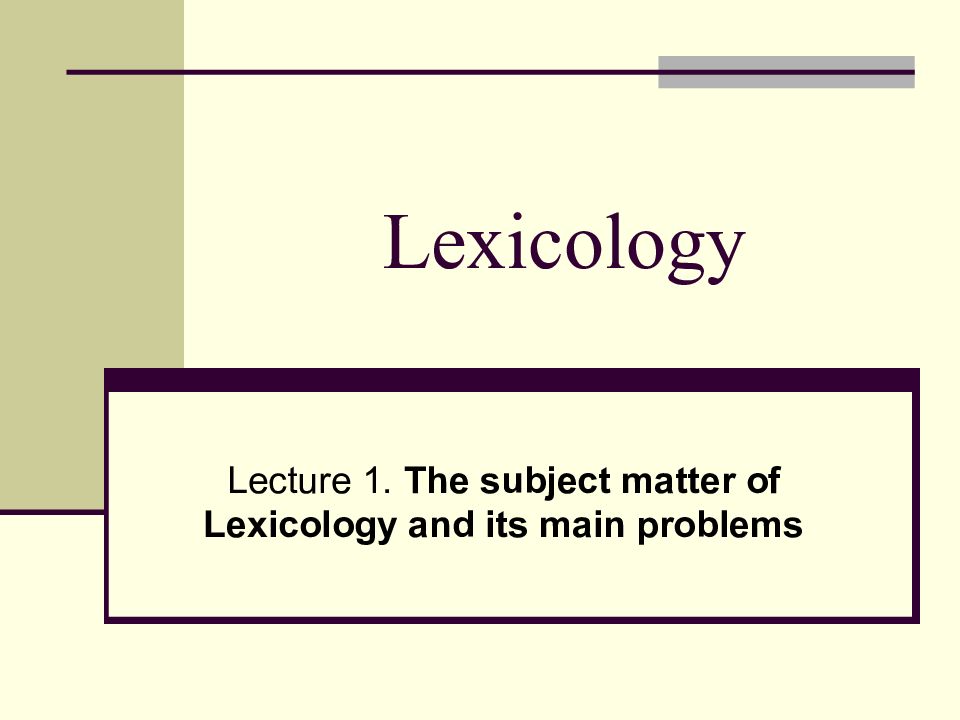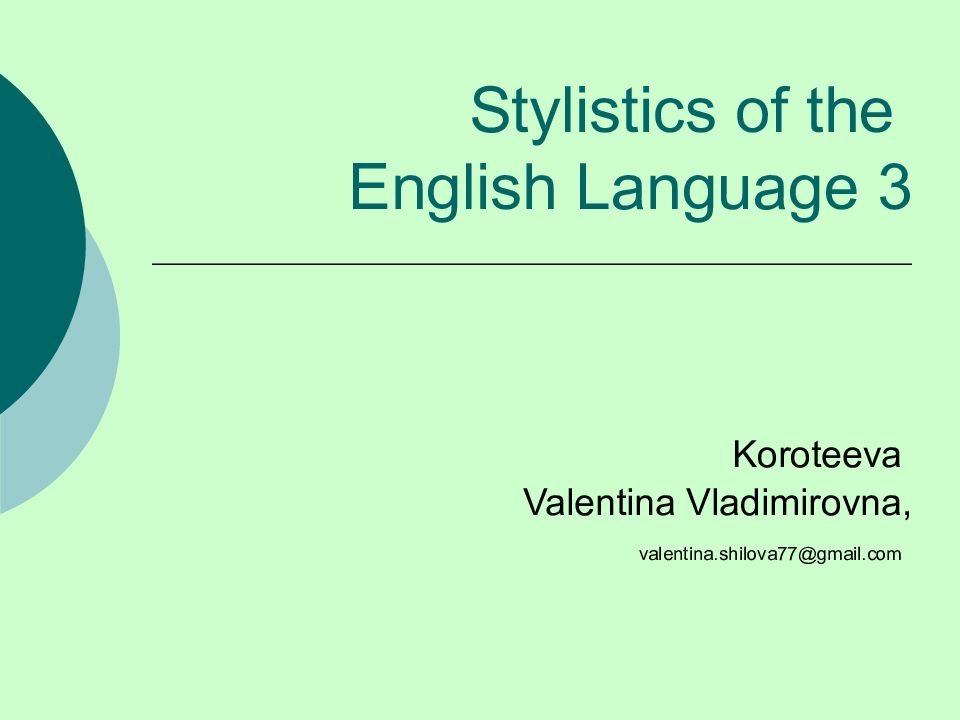Первый слайд презентации
THE POSITION OF GRAMMAR IN THE STRUCTURE OF THE LANGUAGE 1
Слайд 2
1. The position and the role of grammar in the structure of language. 2. The subject and scope of theoretical grammar. 3. General characteristics of the grammatical structure of language. 4. Morphology and syntax as two parts of linguistic description. 5. General characteristics of the grammatical structure of the English language. 1
The language is a structured system which consists of subsystems, or levels. 1
phonemic; lexical; grammatical; communicative (modus). 1
The phonemic level The central unit is …. The function of the unit is …. 1
The phonemic level The central unit is the phoneme, the smallest unit of language with the function of meaning differentiation. 1
Слайд 8: The Position and the Role of Grammar in the Structure of Language
The phonemic level is the lowest; closed (comprises a limited set of phonemes); relatively stable (1) no sounds are borrowed from other languages and 2) phonetic changes, even if they do occur, develop very slowly and embrace long periods of time). 1
Слайд 9: The Position and the Role of Grammar in the Structure of Language
The lexical level The main units are … and …. Their function is …. 1
Слайд 10: The Position and the Role of Grammar in the Structure of Language
The lexical level The main units are the word and the expression, representing 1) objects (material and abstract) and 2) their characteristics (actions, qualities). 1
Слайд 11: The Position and the Role of Grammar in the Structure of Language
The lexical level is the most open; “densely populated”; the most changeable domain of any language. 1
Слайд 13: The Position and the Role of Grammar in the Structure of Language
Conclusion lexical means represent the ontology of the world; with their help we can name objects but can’t communicate. 1
Слайд 15: The Position and the Role of Grammar in the Structure of Language
The grammatical level - provides a person with patterns and schemes of using words to express thoughts, render ideas. 1
Слайд 16: The Position and the Role of Grammar in the Structure of Language
NB If words reflect similar things of the world, grammar patterns and schemes represent concepts peculiar to a certain nation and its language. It’s the people of one nation or ethnical group who chose the main things they consider to be the most important. 1
Слайд 17: The Position and the Role of Grammar in the Structure of Language
"The more we know about the grammar of our language, the more we know about ourselves" [Martha Kolin 1982, preface to "Understanding English Grammar"] 1
Слайд 18: The Position and the Role of Grammar in the Structure of Language
It can be rephrased: "The more we know about the grammar of another language, the more we know about a nation that speaks this language". 1
Слайд 19: The Position and the Role of Grammar in the Structure of Language
Grammar patterns and schemes are not many; stable for quite a period of the language development. 1
Слайд 20: The Position and the Role of Grammar in the Structure of Language
Conclusion 1 Grammar presents a bridge by which words enter the sphere of speech and participate in communication. 1
Слайд 21: The Position and the Role of Grammar in the Structure of Language
Examples of the role of grammar: A thank-you-letter of a Japanese professor to his American colleague who gave him a jar of honey as a gift to take back home: " Thank you for the honey. It is eating my whole family ". 1
Слайд 22: The Position and the Role of Grammar in the Structure of Language
Conclusion 2 grammar categories represent the ontology of language; 1
Слайд 23: The Position and the Role of Grammar in the Structure of Language
Conclusion 3 grammar categories reflect universal categories ( category of number, time, duration, etc. ); 1
Слайд 24: The Position and the Role of Grammar in the Structure of Language
Conclusion 4 grammar is closest to thought; 1
Слайд 25: The Position and the Role of Grammar in the Structure of Language
Conclusion 5 the grammar of any language reflects the mentality of a nation that speaks this language. 1
Слайд 26: The Position and the Role of Grammar in the Structure of Language
Communicative categories (categories of modus) help people to explain and interpret things; - base upon other concepts and categories (NB: lexical and grammar categories reveal independent categories). 1
Слайд 27: The Position and the Role of Grammar in the Structure of Language
Negation There is no negation in reality. It helps: to base upon the concepts a person knows ( It’s not a bird ); to mention facts a person would like to avoid ( It’s not bad ). 1
Слайд 28: The Position and the Role of Grammar in the Structure of Language
Approximation It helps to render the idea of some quality or quantity which are not exact ( almost 50 years, quite interesting, sort of humiliation ). 1
Слайд 29: The Position and the Role of Grammar in the Structure of Language
Conclusion Each level of language is indispensable and each fulfils its own specific function in the language system: 1
Слайд 31: The Position and the Role of Grammar in the Structure of Language
Phonemes present the material part of language thus providing the conditions for uttering words. 1
Слайд 33: The Position and the Role of Grammar in the Structure of Language
Words give names to various phenomena of the world outside and within us and thus constitute the object of our thought. 1
Слайд 35: The Position and the Role of Grammar in the Structure of Language
Grammar fulfils an organizing function: it arranges our thought according to the rules of the language. 1
Слайд 37: The Position and the Role of Grammar in the Structure of Language
Communicative categories provide the language means for the world interpretation. 1
Слайд 38: 2. The Subject and Scope of Theoretical Grammar
What does Theoretical Grammar study? 1
Слайд 39: The Subject and Scope of Theoretical Grammar
homo sapiens (man of wisdom) BUT… 1
Слайд 40: The Subject and Scope of Theoretical Grammar
BUT: those who have pets can easily prove the contrary. 1
Слайд 41: The Subject and Scope of Theoretical Grammar
2. man the toolmaker BUT… 1
Слайд 42: The Subject and Scope of Theoretical Grammar
BUT: apes can also make primitive tools. 1
Слайд 44: The Subject and Scope of Theoretical Grammar
His / Her ability to speak. ↓↓ 3. homo loquens (man the speaking animal) BUT… 1
Слайд 46: The Subject and Scope of Theoretical Grammar
Animals can also speak, naturally, in their own way. Examples : many birds sing partly to establish a territory; honey bees tell others in their hive where sources of food are located; the calls of least some primates are in part learned and not wholly “instinctive”. 1
Слайд 47: The Subject and Scope of Theoretical Grammar
However, their sounds are meaningless in the sense there is no link between sound and meaning (or if there is it is a very primitive kind). 1
Слайд 48: The Subject and Scope of Theoretical Grammar
NB the link for man is … grammar. Only with the help of grammar we can combine words to form sentences and texts. 1
Слайд 49: The Subject and Scope of Theoretical Grammar
4. homo grammaticus The reason: grammar in the widest sense is what makes us human. 1
Слайд 50: The Subject and Scope of Theoretical Grammar
The term “ grammar” goes back to a Greek word “ art of writing”. ↓ Later this word acquired a much wider sense: “ the whole study of language”. ↓ Now it is often used as the synonym of Linguistics. 1
Слайд 52: The Subject and Scope of Theoretical Grammar
The nature of grammar is better understood through the difference between language as a semiotic system and other semiotic systems. 1
Слайд 53: The Subject and Scope of Theoretical Grammar
Language is universal, natural; used by all members of society. 1
Слайд 54: The Subject and Scope of Theoretical Grammar
Any other sign systems are artificial, depend on the sphere of usage. 1
Слайд 55: The Subject and Scope of Theoretical Grammar
The main difference is the enormous complexity of language. ↓ This complexity is closely connected with grammar. 1
Слайд 56: The Subject and Scope of Theoretical Grammar
Examples: a gibbon call has merely a meaning such as "danger" or "food"; the traffic lights can only signal "stop" and "go". 1
Слайд 57: The Subject and Scope of Theoretical Grammar
BUT the possible sentences of English with all the possible meanings are infinite in number; we do not learn the meaning of each of all these countless sentences separately. 1
Слайд 58: The Subject and Scope of Theoretical Grammar
Meanings of others semiotic signs are finite and definite. All the possible meanings of language signs are infinite in number and become definite only in the sentence. Each time we produce new sentences, yet we understand their meanings. 1
Слайд 59: The Subject and Scope of Theoretical Grammar
NB There is a highly complex system in the construction of the sentences. ↓ This complex system differs from language to language — that is why languages are different. ↓ 1
Слайд 60: The Subject and Scope of Theoretical Grammar
Within this system there is a complex set of relations that link the symbols of the language with the "meanings", the message they have to convey. It is grammar, or grammatical system. 1
Слайд 61: The Subject and Scope of Theoretical Grammar
In the widest sense grammar is a complex set of relations, the whole set of grammatical categories and regularities that determine the combination of naming means (nominative units) into utterances as the embodiment of thinking process. 1
Слайд 62: The Subject and Scope of Theoretical Grammar
There are three characteristics of language that are important for the understanding of the nature of grammar. It is complex, productive, arbitrary ( uncontrolled and used without considering our wishes ). 1
Слайд 63: The Subject and Scope of Theoretical Grammar
Language is highly complex : Up to now it has not proved possible to translate mechanically from one language to another with really satisfactory results. 1
Слайд 64: The Subject and Scope of Theoretical Grammar
“out of sight, out of mind” --- “invisible idiot” ↓ The fault lies not in the computer but in the failure to provide it with sufficiently accurate instructions, because we are still unable to handle this complex system. 1
Слайд 65: The Subject and Scope of Theoretical Grammar
Language is productive: We can produce myriads of sentences that we have never heard or uttered before. 1
Слайд 66: The Subject and Scope of Theoretical Grammar
E.g.:Norry noms ↓ smth / smb has nomed, to be nommed, etc. ↓↓ 1
Слайд 67: The Subject and Scope of Theoretical Grammar
It is clear that we have some kind of sentence producing mechanism. One task of grammatical theory is to explain this remarkable fact. 1
Слайд 68: The Subject and Scope of Theoretical Grammar
Language is arbitrary : There is no one-to-one relation between sound and meaning. The forms of linguistic units bear no natural resemblance to their meaning. The link between them is a matter of convention, and conventions differ radically across languages. 1
Слайд 69: The Subject and Scope of Theoretical Grammar
When we discuss grammar, however, we do assume that many characteristics of the language are shared. For this reason we talk of the most abstract categories: "nouns", "verbs", "gender“, etc. 1
Слайд 70: The Subject and Scope of Theoretical Grammar
As a special science about grammatical system grammar may be: practical, theoretical. It depends upon the purpose of a linguistic description. 1
Слайд 72: The Subject and Scope of Theoretical Grammar
The aim of practical grammar is the description of grammar rules that are necessary to understand and formulate sentences. 1
Слайд 74: The Subject and Scope of Theoretical Grammar
The aim of theoretical grammar is to offer explanation for these rules. 1
Слайд 75: The Subject and Scope of Theoretical Grammar
Generally speaking, theoretical grammar deals with the language as a complex functional system. It: - presents language units in relative isolation, - explains their inner structure and the intrinsic mechanisms of their functioning. 1
Слайд 76: The Subject and Scope of Theoretical Grammar
In other words, theoretical grammar of a language presents a theoretical description of its grammatical system, i.e. scientifically analyses and defines its grammatical categories and studies the mechanisms of grammatical formation of utterances out of words in the process of speech making (speech production). 1
Слайд 77: The Subject and Scope of Theoretical Grammar
The mission of practical grammar is to say what grammatical form must be used, how the sentence is built. Theoretical grammar is entitled to explain why the language system works this or that way. 1
Слайд 78: The Subject and Scope of Theoretical Grammar
You know that : language and speech are inseparable; we distinguish them only for scientific purposes. But nobody objects that: - these two parts of the organic unity are quite different. 1
Слайд 80: The Subject and Scope of Theoretical Grammar
It is grammar that ensures the stability of the organic unity that comprises language and speech. ↓ So, it dynamically connects language with speech by categorially determining the process of utterance production. 1
Слайд 81: The Subject and Scope of Theoretical Grammar
A lingual sign in the system of language has only a potential meaning. In speech the potential meaning of the lingual sign is "actualized", in other words, it is made situationally significant as part of the grammatically organized text. 1
Слайд 82: The Subject and Scope of Theoretical Grammar
Example: - s for plural Many students; To the snows of Africa; Silks and people have gone out of style, etc. 1
Слайд 83: The Subject and Scope of Theoretical Grammar
NB the true grammatical categories, their forms, as well as the rules or regularities are meaningful. They have their own meaning. 1
Слайд 84: The Subject and Scope of Theoretical Grammar
Example: inverted word order 1
Слайд 87: The Subject and Scope of Theoretical Grammar
1. It helps to emphasize some characteristics of a situation: ??? ( Then, one autumn, the local journal printed the announcement ) ??? ( From the darkness came whispering voices ) ??? ( And nervously, tentatively, he offered himself for a part ) 1
Слайд 88: The Subject and Scope of Theoretical Grammar
2. It switches un-emotive mode of speech into an emotive one. One thing and one thing only could she do for him (R. Kipling). 1
Слайд 89: 3. General Characteristics of the Grammatical Structure of Language
The grammatical structure of language is a system of means used to turn linguistic units into communicative ones, in other words — the units of language into the units of speech. 1
Слайд 91: 3. General Characteristics of the Grammatical Structure of Language
- inflexions, - affixation, - word order, - function words, - phonological means. 1
Слайд 92: General Characteristics of the Grammatical Structure of Language
Indo-European languages are classified into two structural types : - synthetic, - analytic. 1
Слайд 93: General Characteristics of the Grammatical Structure of Language
Synthetic languages are the languages of " internal " grammar of the word (most of grammatical meanings and grammatical relations of words are expressed with the help of inflexions) Examples: Ukrainian, Russian, Latin, etc. 1
Слайд 94: General Characteristics of the Grammatical Structure of Language
Analytical languages are The languages of " external " grammar (most grammatical meanings and grammatical forms are expressed with the help of words: will do, have been doing, etc. 1
Слайд 95: General Characteristics of the Grammatical Structure of Language
However, we cannot speak of languages as purely synthetic or analytic. ↓ Modern English possesses analytical forms as prevailing, in the Russian language synthetic devices are dominant. 1
Слайд 96: General Characteristics of the Grammatical Structure of Language
NB In the process of time English has become more analytical as compared to Old English. Analytical changes in Modern English (especially American) are still under way. 1
Слайд 97: 4. Morphology and Syntax as Two Parts of Linguistic Description
The main unit of traditional grammatical theory is the word. It serves the basis of the distinction that is frequently drawn between morphology and syntax. 1
Слайд 98: Morphology and Syntax as Two Parts of Linguistic Description
Morphology (the grammatical teaching of the word) deals with the notion of the word. 1
Слайд 99: Morphology and Syntax as Two Parts of Linguistic Description
The scope of morphology includes: morphemes, the internal structure of words, peculiarities of their grammatical categories and their semantics. 1
Слайд 100: Morphology and Syntax as Two Parts of Linguistic Description
Syntax (the grammatical teaching of the sentence) deals with the notion of the sentence. 1
Слайд 101: Morphology and Syntax as Two Parts of Linguistic Description
Traditional syntax deals with the rules governing combination of words in sentences (and texts in modern linguistics). 1
Слайд 102: Morphology and Syntax as Two Parts of Linguistic Description
In highly inflectional languages ( Russian ) the syntactic role of the word in the sentence is manifested primarily by the grammatical form of the word. ↓ Morphology plays a very important role in the expression of grammatical meanings of words and their role in the sentence, therefore the word order is comparatively free. 1
Слайд 103: Morphology and Syntax as Two Parts of Linguistic Description
In isolating languages ( Chinese ) the syntactic role of a word is manifested not by its grammatical form, but by its position in the sentence and therefore the word order is fixed. 1
Слайд 104: Morphology and Syntax as Two Parts of Linguistic Description
English has the features of both inflectional and isolating languages: - words do have grammatical markers of their syntactic role in the sentence (e.g. I saw him ), - but these markers are very few and in most cases the syntactic role of a word in the sentence is manifested by its position rather than by its grammatical form (e.g. A hunter caught a bear). → 1
Слайд 105: Morphology and Syntax as Two Parts of Linguistic Description
Therefore, the word order in the English sentence is fixed. 1
Слайд 106: 5. General Characteristics of the Grammatical Structure of English
Each language has a special cut, or design. (Edward Sapir, the eminent American scholar) ↓ This special cut finds its manifestation on all levels of the language, but primarily on its grammatical structure. 1
Слайд 107: General Characteristics of the Grammatical Structure of English
Two main reasons why we need to know about the peculiarities of the grammatical structure of English? 1. to understand the reasons for the speaker's choice of a grammatical form (e.g. Let me have a say) 2. for a foreign language acquisition. 1
Слайд 108: General Characteristics of the Grammatical Structure of English
The peculiarities of the grammatical structure of English: Due to the morphological simplicity of many words they are easily converted from one part of speech into another. ↓ 1
Слайд 109: General Characteristics of the Grammatical Structure of English
Examples: Let's roun d the conversation. They had another round of talks yesterday. Her face was round and cheerful. He suddenly turned round. They live just round the corner. 1
Слайд 110: General Characteristics of the Grammatical Structure of English
-"Darling", he began. "Don't darling me, Producer" (I: Shaw); -Teachers talk teacher talk. 1
Слайд 111: General Characteristics of the Grammatical Structure of English
English is a fixed word-order language, and more specifically, it is a Subject-Verb-Object language (the grammatical meaning of a word in English often manifests itself through its syntactic position in the sentence) John loves Diana. Diana loves John. 1
Слайд 112: General Characteristics of the Grammatical Structure of English
3. The ability of the preposition to be placed at the end of a sentence which is directly related to the fixed word-order (since the first word in the sentence is usually the subject) He was taken a good care of. 1
Слайд 113: General Characteristics of the Grammatical Structure of English
4. It is a subject-prominent language (all sentence must have a subject) It's never too late to learn; There is no getting away from it. 1
Слайд 114: General Characteristics of the Grammatical Structure of English
5. English has a predominantly analytical character and a limited number of inflections. Most of the tense-aspect forms of the English verb are analytical formations. 1
Слайд 115: General Characteristics of the Grammatical Structure of English
6. English appears to have a marked tendency towards nominalization. (Germans point out that the English have a 'noun disease‘). Compare: Make a guess! - Угадай ! She gave him a surreptitious look - Она взглянула на него украдкой ; You should do some more reading – Вам следует еще почитать. 1
Слайд 116: General Characteristics of the Grammatical Structure of English
7. English has a more abundant use of the non-finite forms of the verb (→ sentences in English are often characterized by a greater degree of compression ). Compare: I've never seen him smile like this – Я никогда не видел, чтобы он так улыбался ; A lot depends on your being diplomatic enough – Многое зависит от того, будете ли вы достаточно дипломатичны. 1


























































































































